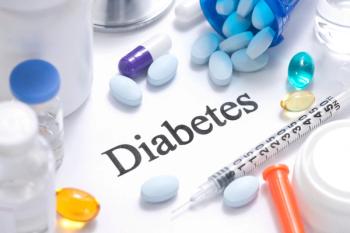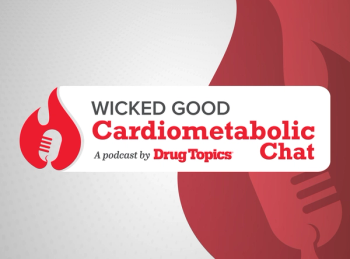
GLP-1, SGLT2 Prescriptions for Patients With T1D Increased Over Past Decade
A recent study found the percentage of type 1 diabetes patients who were prescribed either GLP-1s or SGLT2 inhibitors increased from 0.7% to 8.3% between 2010 and 2023.
Prescriptions for both glucagon-like peptide-1 receptor agonists (GLP-1s) and sodium-glucose cotransporter 2 (SGLT2) inhibitors increased from 2010 to 2023 in patients with type 1 diabetes (T1D), according to research published in JAMA Network.1 The study investigators said that more studies are needed on the safety and efficacy of these medications in the T1D population.
As the prevalence of T1D continues to increase, the need for different therapies remains key for managing the disease. GLP-1s and SGLT2 inhibitors have both proven effective for treating type 2 diabetes, but there remains concerns about their use in patients with T1D. However, due to their ability to promote weight loss and protective cardiovascular effects, there is a chance they are being underutilized in the T1D population.2
READ MORE:
“Concerns about euglycemic diabetic ketoacidosis led to the removal of SGLT2 inhibitors for T1D in Europe, and the [FDA] has not approved their use in T1D,” the authors wrote. “Concerns exist about GLP-1s causing substantial weight loss and increasing the risk of ketoacidosis or hypoglycemia. However, use of these newer medications in T1D may continue due to the significant weight management and cardiorenal benefits observed in people with and without type 2 diabetes.”
A team of Investigators from Emory University and the University of Florida College of Pharmacy conducted a pooled cross-sectional analysis to examine prescribing trends for individuals with T1D prescribed GLP-1s and SGLT2 inhibitors. Data for the study was gathered from Epic Cosmos electronic health records, which is an integrated database including more than 257 million patients in the United States across all 50 states.
The study cohort included 943456 patients with T1D from 2010 to 2023. Sociodemographic, laboratory values, vital statistics, comorbidities, and complication characteristics were compared between the overall T1D population and those who received a new prescription for either a GLP-1 or an SGLT2 inhibitor. Investigators examined trends in prescribing for GLP-1s and SGLT2 inhibitors from 2010 to 2023.
The data showed that the percentage of T1D patients who were prescribed either GLP-1s or SGLT2 inhibitors increased from 0.7% to 8.3% between 2010 and 2023. For GLP-1s specifically, the rate increased from 0.3% to 6.6%. The rate for SGLT2 inhibitors rose from 0.1% to 2.4%. Of GLP-1s, semaglutide saw the highest growth, increasing from 0.2% in 2018 to 4.4% in 2023. This was followed by tirzepatide, which reached 1.3% after being approved in 2022.
The study also found that those who were newly prescribed a SGLT2 inhibitor had significantly higher rates of pre-existing cardiovascular and kidney conditions compared to the general T1D population. Likewise, patients newly prescribed a GLP-1 had higher rates of obesity compared to the general T1D population. Additionally, T1D subgroups with cardiovascular disease saw the highest increase in SGLT2 inhibitor prescribing, while the greatest increase in GLP-1 prescribing was among patients with obesity.
“Despite concerns that GLP-1 receptor agonists and SGLT2 inhibitors may cause serious adverse events such as ketoacidosis, the use of these medications in T1D has sharply increased over the past decade,” Hui Shao, MD, PhD, a corresponding author on the study, said in a release.3 “This increase is likely to continue due to their significant benefits in weight management and cardiorenal protection observed in individuals with type 2 diabetes and the general obese population.”
READ MORE:
Are you ready to elevate your pharmacy practice? Sign up today for our
References
1. Li P, Li Z, Staton E, et al. GLP-1 Receptor Agonist and SGLT2 Inhibitor Prescribing in People With Type 1 Diabetes. JAMA. Published online October 23, 2024. doi:10.1001/jama.2024.18581
2. Anson M, Zhao SS, Austin P, et al. SGLT2i and GLP-1 RA therapy in type 1 diabetes and reno-vascular outcomes: a real-world study. Diabetologia. 2023 Oct;66(10):1869-1881. doi: 10.1007/s00125-023-05975-8. Epub 2023 Jul 28. PMID: 37505282; PMCID: PMC10473989.
3. GLP-1 receptor agonist and SGLT2 inhibitor prescribing in people with type 1 diabetes. News Release. JAMA Network. October 23, 2024. Accessed October 24, 2024. https://www.eurekalert.org/news-releases/1061906
Newsletter
Pharmacy practice is always changing. Stay ahead of the curve with the Drug Topics newsletter and get the latest drug information, industry trends, and patient care tips.





















































































































































